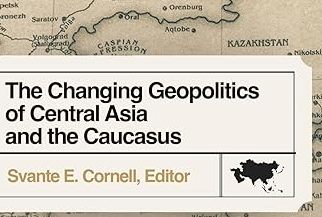THE GROWING TRADE STAKES OF THE CHINESE-KYRGYZ-UZBEK RAILWAY PROJECT
By Sébastien Peyrouse (3/11/2009 issue of the CACI Analyst)
For nearly fifteen years, the idea of building a railway line linking China to the Uzbek part of the Fergana Valley via Kyrgyz territory has run up against multiple problems, divergences of opinion, and technical difficulties. Since 2008, however, things seem to be taking a more positive shape, now that there has been a change of scale in the economic stakes: opening up the Uzbek market would facilitate a boom in trade with China, while Bishkek also hopes to hold off the competition coming from Kazakhstan and Tajikistan and to shore up its status as the foremost platform in Central Asia for the re-export of Chinese products.
BACKGROUND: This railway project was launched in 1996 by Tashkent, and a first tripartite commission met the following year.
NATO CONFRONTS ITS EURASIAN RIVALS
By Stephen Blank (3/11/2009 issue of the CACI Analyst)
Even before its 60th birthday summit in Strasbourg on April 3-4, NATO must decide how it wishes to relate to its Eurasian rivals, the Collective Security Treaty Organization (CSTO) and the Shanghai Cooperation Organization (SCO). NATO Secretary-General Jaap de Hoop Scheffer has been invited to an SCO summit in Moscow that will discuss Afghanistan on March 27. At the same time, Moscow and its emissaries are incessantly importuning NATO to recognize the CSTO as a legitimate and viable security organization and deal with it accordingly.
ECONOMIC CRISIS STRENGTHENS RATHER THAN WEAKENS MOSCOW’S INFLUENCE IN THE ‘NEAR ABROAD’
By Marlène Laruelle (2/25/2009 issue of the CACI Analyst)
Russia’s increasingly assertive foreign policy in the former Soviet Union after the war with Georgia has manifested itself in the CSTO’s decision to create a Rapid Reaction Force (RRF), seeking to enhance security in Eastern Europe, the South Caucasus and Central Asia. The creation of the RRF signals not only Russia’s intentions to bolster regional stability, but also its plans to halt NATO’s advance in its traditional “backyard,” bind the CSTO states to stronger commitments, and provide additional guarantees for security in the South Caucasus, especially in Nagorno-Karabakh, following Georgia’s failed blitzkrieg in South Ossetia.
POST-WAR GEORGIA’S ECONOMIC CHALLENGES
By Vladimer Papava (11/26/2008 issue of the CACI Analyst)
After the five-day Russian-Georgian war in August 2008, and in consideration of the global financial crisis, Georgia has come to face new economic challenges. These include, in particular, undoing the economic damage caused by the war, avoiding a crisis in the banking sector, preventing further growth of an already high inflation rate, and preserving the stability of the national currency’s – the Georgian Lari (GEL) – exchange rate.



 Silk Road Paper S. Frederick Starr,
Silk Road Paper S. Frederick Starr,  Book Svante E. Cornell, ed., "
Book Svante E. Cornell, ed., "